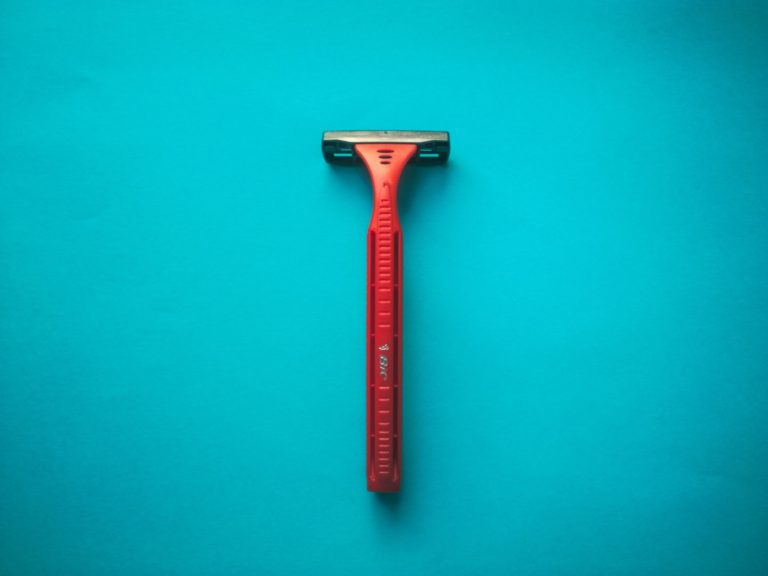It doesn’t matter if this is your first tattoo or your 100th, there are always questions regarding aftercare, and more times than not this question comes to mind after you have left the shop.
A common question that many of us forget to ask about shaving and hair removal from our newly tattooed skin. So when can you shave over a new tattoo? Shaving over a new tattoo should be done only after the tattoo is only fully healed.
Healing Process and Time
During the healing process, it is common for a new tattoo to scab over and shed old layers of skin as the body generates new skin. As new skin is generated it is often shiny until the healing process is complete. The new skin surrounding the tattoo creates a protective barrier over the ink preserving it within the skin. The 
The healing time will vary depending on the size and location of the tattoo and how well the aftercare instructions are followed. As long as the tattoo is flush with the skin, free of any scabs, and there is no shine on the skin, you should be able to shave the tattooed area, once it’s healed, without any problems.
Many times questions come to us because something happens that you didn’t expect to happen or you didn’t expect that it would happen to you. No one plans to shave over their new tattoo but this time you may be in a hurry and out of habit you accidentally shave over your new tattoo.
As tattoos heal they become itchy, when we are awake we know that we shouldn’t scratch or pick at the new tattoo but this is something hard to control when you are asleep and you make wake up to find that you scratched your new tattoo throughout the night. Your new tattoo can also be scratched unintentionally during the day to day activity. Things often happen unexpectedly, but how do you take care of the unexpected injury to your new tattoo, and will it be damaged?
Proper care for a new tattoo that has been accidentally scratched or shaved over.
A skinned knee is an open wound and a new tattoo is considered to be just that, an open wound. Your new tattoo is healing and the healing process is disrupted by a secondary injury such as a scratch. To keep your new tattoo from becoming damaged or infected you need to make sure to keep it clean to prevent infection.
Proper cleaning:
– Use warm water
– Antibacterial Soap
– Using only your hands wash gently
– Pat dry with clean towel
– Apply ointment (A & D) if necessary
It is always a good idea to contact your tattooist and follow their recommendations on the best methods for aftercare.
Once your tattoo is fully healed there is a very good chance that there will be little to no visible damage to your tattoo, but in some cases, the damaged area of the tattoo may show some discoloration or it may have no color at all. Depending on the severity of the scratch you may also have some scaring.
Injuries that occur when a tattoo is still fresh and had had minimal time to heal are more likely to have visible signs of the injury once the tattoo is healed. Tattoos that have had more healing time before being injured tend to heal better since tattooed skin had been able to heal for a longer amount of time. The amount of permanent damage to the injured area of the tattoo can only be assessed once both wounds have been able to fully heal.
Shaving, Hair removal creams, waxing, and laser hair removal.
Your tattoo is fully healed and you are ready to remove the hair that has grown during that time. Shaving is the most common but is using a hair removal cream, waxing, or laser hair removal a better option on tattooed areas. It’s important to choose hair removal methods that won’t cause damage to your tattoo or cause the tattoo to fade or change in color.
Hair removal methods
Shaving
The most common hair removal method. Wait for the tattoo to be fully healed before shaving over your tattoo. When shaving occurs before the tattoo is fully healed there is an increased risk of infection, irritation, and permeant damage to the skin and/or the tattoo image itself.
Hair removal creams aka Depilatory Creams
Hair removal creams, ask called depilatory creams are fine to use over a tattoo that is completely healed. When your tattoo is fully healed the ink is in the deep layers of skin called the dermis. Depilatory or hair removal creams only remove the hair from the epidermis which is found above the dermis. You want to avoid contact with any hair removal creams if your tattoo is still healing. Remember tattoos are much like open wounds, so applying a hair removal cream to unhealed skin can cause severe irritation and also increase the chance of infection.
Waxing
Waxing is a great way to remove hair from a tattoo once it has healed. When the wax is used to remove unwanted hair the wax is only applied along the hairline, on the outermost layer of skin (epidermis). Due to the placement of the wax to successfully remove the hair, you have no worries when it comes to your tattoo.
The wax doesn’t touch the tattoo or come anywhere near it. The ink that is deposited in the skin to create your tattoo is further down in the deeper layers of the skin (dermis). If you find waxing to be your method of choice for hair removal, feel free to wax freely and without damaging your tattoo.
Remember to only wax once your tattoo is fully healed. Waxing over a tattoo that is not healed can damage the tattooed skin by pulling off the scabs and other healed skin and result in possible scarring and discoloration.
Laser Hair Removal
Using a laser to have hair removed from a tattooed area is not recommended at any time. Whether your tattoo is new or it’s been years since you had it done. Laser hair removal can distort your tattoo and may cause burns and blistering to your skin, which can leave you with permanent skin damage.
If you are thinking of having laser hair removal done have the treatment completed before getting any tattoos or have the laser done around the tattooed area so it doesn’t cause any damage.
Will my tattoo fade if I use one of these methods?
Your tattoo will not fade as long as you stick with shaving, waxing, or a hair removal cream. The ink from your tattoo is deposited deep into the skin, and do not have contact with these hair removal methods. So your tattoo will not fade if you use one of these three methods.
Laser hair removal will damage your tattoo. It will not only cause fading but it will discolor it and can cause permanent damage to the tattooed skin. So avoid laser hair removal on any parts of the body that have been tattooed on. regardless of how long the tattoo has been there, one year or fifty years the laser will still cause significant damage to your skin.
Do tattoos stop hair growth?
Sorry everyone, tattoos do not stop hair growth. The hair follicle is located deep below the surface of the skin. The ink is deposited in the skin for your tattoo is much closer to the surface of the skin and doesn’t even begin to go anywhere as deep as a hair follicle. Now that we know our hair will continue to grow on the tattooed areas of our body let’s see what else we should keep in mind as we remove hair from tattoos.
The key to having a great-looking tattoo is to be patient with the healing process. Don’t rush it by using a hair removal method too early. Keep up with the aftercare instructions and keep it clean and avoid infection and irritation.
Your tattoo is a part of you and will be a part of your body for the rest of your life. In the grand scheme of things, 4-6 weeks is a very small fraction of time to give something to heal properly when it will be a part of you for a lifetime.

